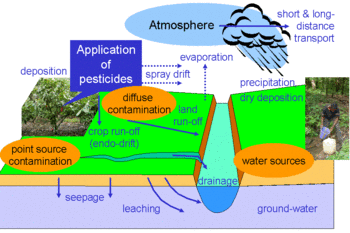The Of Eco Bed Bug Exterminators Dc
The Of Eco Bed Bug Exterminators Dc
Blog Article
Excitement About Eco Bed Bug Exterminators Dc
Table of ContentsThe Ultimate Guide To Eco Bed Bug Exterminators DcEco Bed Bug Exterminators Dc - An OverviewEco Bed Bug Exterminators Dc for DummiesHow Eco Bed Bug Exterminators Dc can Save You Time, Stress, and Money.Eco Bed Bug Exterminators Dc Fundamentals Explained
Because pesticides are harmful, they are also potentially harmful to humans, animals, other organisms, and the atmosphere. Individuals that use chemicals or frequently come in call with them have to comprehend the relative toxicity, possible health and wellness effects, and preventative measures to decrease direct exposure to the products they use. Risk, or risk, of making use of pesticides is the potential for injury, or the level of risk included in making use of a chemical under a provided set of problems.
However, applicators can minimize or almost get rid of exposure-- and therefore decrease risk-- by following the tag directions, making use of individual protective clothes and tools (PPE), and taking care of the pesticide properly. More than 95 percent of all pesticide direct exposures come from facial exposure, mostly to the hands and lower arms. By using a pair of unlined, chemical-resistant gloves, this type of direct exposure can be virtually eliminated.
The harmful effects that take place from a solitary direct exposure by any type of course of entry are labelled "acute effects." The 4 routes of exposure are dermal (skin), breathing (lungs), dental (mouth), and the eyes. Severe poisoning is determined by examining the dermal toxicity, breathing toxicity, and oral poisoning of examination pets.
What Does Eco Bed Bug Exterminators Dc Mean?
Acute toxicity is measured as the amount or focus of a toxicant-- the a.i.-- called for to eliminate 50 percent of the pets in an examination population. This step is usually expressed as the LD50 (lethal dosage 50) or the LC50 (deadly focus 50). Furthermore, the LD50 and LC50 values are based upon a single dosage and are taped in milligrams of pesticide per kilogram of body weight (mg/kg) of the guinea pig or in parts per million (ppm).
The lower the LD50 or LC50 value of a pesticide item, the greater its toxicity to people and animals. Chemicals with a high LD50 are the least toxic to humans if utilized according to the directions on the item tag. The chronic poisoning of a chemical is identified by subjecting test pets to long-lasting exposure to the energetic component.
The persistent poisoning of a chemical is harder than intense poisoning to figure out via research laboratory evaluation. Products are classified on the basis of their relative acute toxicity (their LD50 or LC50 values). Chemicals that are identified as extremely harmful (Toxicity Category I) on the basis of either dental, dermal, or inhalation toxicity have to have the signal words risk and toxin printed in red with a head and crossbones icon plainly showed on the front panel of the plan tag.
The intense (solitary dosage) dental LD50 for pesticide products in this team ranges from a trace quantity to 50 mg/kg. Direct exposure of a few drops of a product taken orally can be fatal to a 150-pound individual. https://experiment.com/users/ecobedbug3xt. Some pesticide products have simply the additional info signal word risk, which informs you absolutely nothing concerning the intense toxicity, simply that the item can trigger severe eye damages or serious skin irritation
Eco Bed Bug Exterminators Dc for Dummies
In this category, the intense oral LD50 arrays from 50 to 500 mg/kg. A tsp to an ounce of this material might be fatal to a 150-pound individual (pest control Washington DC). Pesticide items categorized as either slightly hazardous or reasonably nontoxic (Toxicity Groups III and IV) are called for to have the signal word CAUTION on the pesticide label

All chemical poisoning worths, consisting of the LD50, can be located on the product's Material Safety and security Data Sheet (MSDS) - bed bug treatment. Pesticide tags and MSDS can be obtained from merchants or produces. In enhancement, many products also know that can be found on the net. The symptoms of pesticide poisoning can range from a moderate skin irritability to coma or even fatality.
Individuals also differ in their level of sensitivity to different degrees of these chemicals. Some people may reveal no response to a direct exposure that may trigger severe health problem in others (bed bug treatment). Due to prospective health worries, pesticide customers and trainers need to identify the typical symptoms and signs of chemical poisoning. The impacts, or symptoms, of chemical poisoning can be extensively defined as either topical or systemic.
The Basic Principles Of Eco Bed Bug Exterminators Dc
Dermatitis, or swelling of the skin, is approved as one of the most frequently reported topical result associated with pesticide exposure. Symptoms of dermatitis range from reddening of the skin to rashes and/or blisters. Some individuals often tend to cough, hiss, or sneeze when revealed to pesticide sprays. Some individuals respond to the solid odor and annoying effects of petroleum extracts utilized as providers in chemical items.
This sign normally subsides within a few minutes after a person is removed from the exposure to the irritant. A response to a pesticide item that creates somebody not only to sneeze and cough however likewise to establish severe intense respiratory signs and symptoms is a lot more most likely to be a true hypersensitivity or allergic reaction.
Systemic effects are fairly different from topical effects. They frequently take place far from the original factor of call as a result of the pesticide being soaked up into and distributed throughout the body. Systemic impacts typically consist of queasiness, vomiting, fatigue, migraine, and intestinal conditions. In advanced poisoning situations, the individual might experience changes in heart price, difficulty breathing, convulsions, and coma, which can lead to death.
Report this page